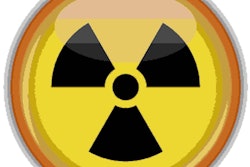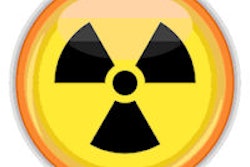
Radiologists in Finland found they could deliver a consistently high percentage of clinically justified CT exams in young patients by taking a few simple steps, according to a new study in the British Journal of Radiology.
By incorporating specific interventions -- education, guideline implementation, and increased MRI capacity -- into the examination ordering process over seven years, the researchers boosted the percentage of justified examinations in young patients from 71% to 87% -- even as the overall number of CT scans grew.
"This study demonstrates that it is possible to reduce the number of various CT examinations and to improve their justification in young patients by regular education, guideline implementation, and increased MRI capacity," wrote Dr. Pirita Tahvonen and colleagues from Oulu University Hospital, in Oulu, Finland (BJR, 1 September 2013, Vol. 86:1029, pp. 20130337).
Why justify?
A "justified" medical exposure is one that provides the patient with more benefit than harm, which in diagnostic imaging often means ruling out all of the alternative methods that might reduce or eliminate radiation exposure, Tahvonen et al wrote. Many experts have said a large portion of today's radiation-bearing exams are inappropriate.
Knowledge of radiation dose and its risks is spotty among both physicians and radiologists, and risks are often underestimated. But the International Commission on Radiological Protection (ICRP) has emphasized that education, training, and practice "play a crucial role in improving the professionalism of justification," that study team wrote.
CT exams are pivotal in modern medical care, but they deliver substantial radiation burden, and the physiological burden tends to be greater for patients 35 years old and younger, the authors noted. In their 2005 study on justification for CT, 77% of head exams were unjustified, which led the authors to develop criteria to improve the imaging process. This study, which aimed to determine if justification rates had improved over four years, represents the culmination of those efforts.
The group implemented a number of measures to boost the justification rate including:
- Providing eight annual educational sessions per year (four sessions, each repeated) on radiation protection for hospital radiology staff, with video links to the sessions for other hospitals in northern Finland. Topics from orthopedic to abdominal and pediatric imaging were highlighted in every session, which included handouts, and the topics varied from year to year.
- Doctors were given laminated information cards on radiation protection and radiation doses on frequently used exams to give to referring physicians.
- Adopted criteria recommended MRI as the primary head exam, with CT reserved for acute case. (One MRI scanner was added.) Clinicians were asked to consult with a radiologist before ordering CT, and the guidelines were distributed by email.
Between 2005 and 2009, the number of CT exams increased by 12%, from 16,975 to 19,046, but the number of CT exams performed on patients younger than 35 decreased by 7% (p = 0.012), the authors wrote. Notably, cervical spine CT scans were reduced by 48% (p < 0.001) and the use of head CT dropped by 21% (p < 0.0001). A total of 177 scans were analyzed for the study.
Even with the guidelines, however, eight of the 30 head CTs performed were still unjustified, and all could have been performed with MRI instead, the group wrote. Similarly, five of the six remaining unjustified abdominal exams could have been performed with MRI.
Meanwhile, the proportion of justified CT exams increased from 71% (141/200) in 2005 to 87% (154/177 in 2009). Notably, justification for lumbar spine exams rose from 23% (7/30) to 81% (22/27) (p < 0.001). In the case of most of the unjustified examinations, MRI could have been performed instead. The total number of CT examinations carried out on young patients fell by 7% (p = 0.012) and in the lumbar spine group by 79% (p < 0.001).
Twenty-six of 177 exams were performed on children 15 years and younger, and the proportion of justified exams in this age group rose only from 88% to 92%.
Much effort has been expended in recent years to develop optimized protocols and procedures. As for implementation, however, "fewer attempts have been made, and those attempts have not yet been sufficiently successful," Tahvonen and colleagues wrote. "Optimization of the radiological examination protocols and dose is extremely important, but careful selection of patients for the examinations and, whenever possible, the use of imaging modalities without ionizing radiation, may be equal or more effective tools towards reducing patient dose."
Few previous studies have been done on the topic, but a Finnish national survey in 2009 found that 20% of all CT exams were unjustified, including 42% of spine CTs and 19% of abdominal CTs, the study authors reported. Studies have also been done on automated ordering systems, but the authors were unaware of any other studies that used similar traditional methods to reduce CT radiation exposure levels.
Among the limitations, the study was conducted in a single center, and the number of exams analyzed (n = 177) was low, the study group noted.
"In general, it is probably impossible to reach 100% justification," Tahvonen and colleagues wrote. "However, it is still essential to develop justification processes further. Regular updating of referral guidelines and their use and increased patient information concerning issues of radiological examinations could also contribute to increased justification."



















